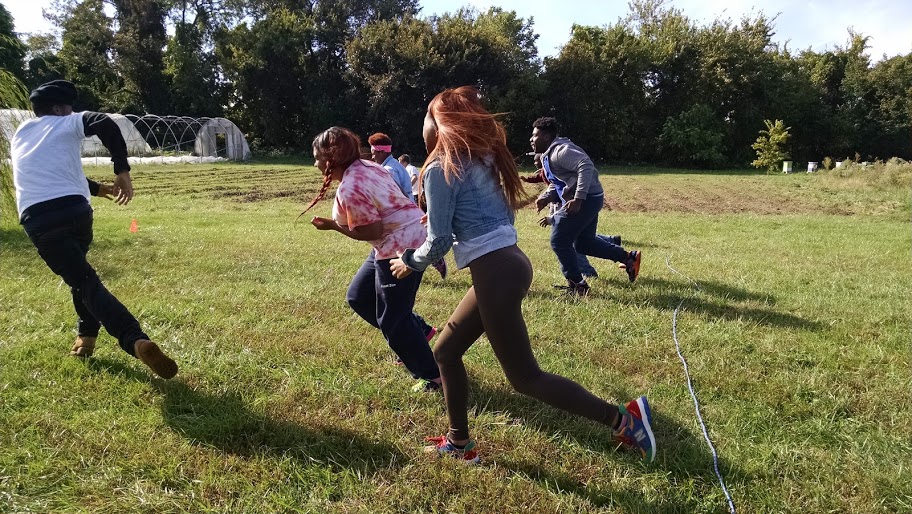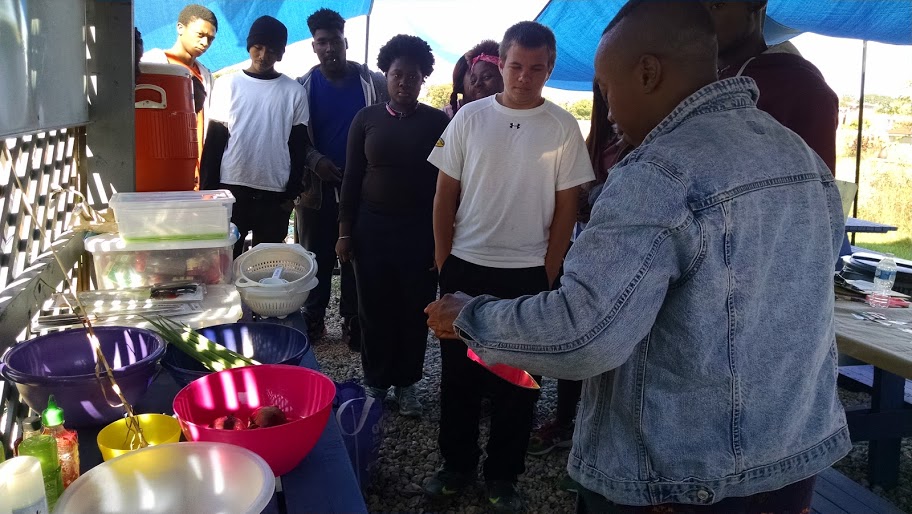Youth Crew 2015 – Day 2!
Enjoying a perfect, warm, sunny, Saturday morning, students once again gathered outside on the farm at the blue pavilion for day 2 of Youth Crew.
As usual, we started the day off with a game, this time playing Human Rock, Paper, Scissors! Educators Molly and Waqia spread a rope across the field behind the pavilion, marking the meeting line. Youth Crew members then split into two groups and stood at a safe zone on opposite sides of the field. Each team was given a few moments to decide together what to “throw” before stepping up to face each other at the line. At the count of “three, two, one, go!” each team gestured either a rock, paper or scissor at the other team.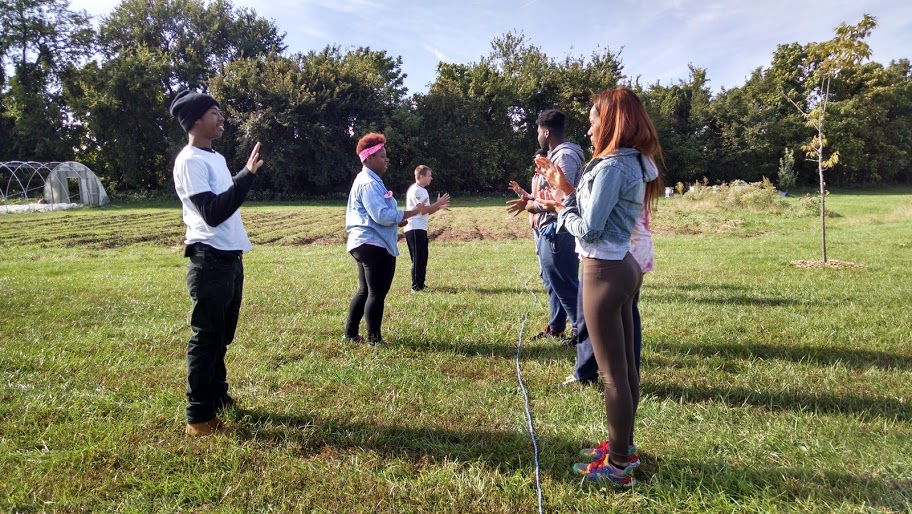 .
.
Of course, rock beats scissor, scissor beats paper, paper beats rock and so the team to throw out the winning gesture has to then chase the losing team, the goal being to capture as many people from the losing team before they reach their safe zone. The game ends when the winning team captures all the losing team’s members – as you can see below, one brave member faced off against the full team and was chased back to safe!
Finishing the game, students walked back over to the pavilion and took a seat while Molly and Waqia briefly reviewed the guidelines from the first day with students and then moved on to a lesson on nutrition titled “Eat the Rainbow.” Molly spread out a long, brown sheet of paper across one of the picnic tables and had a student volunteer to lay out on the paper while other students traced her body.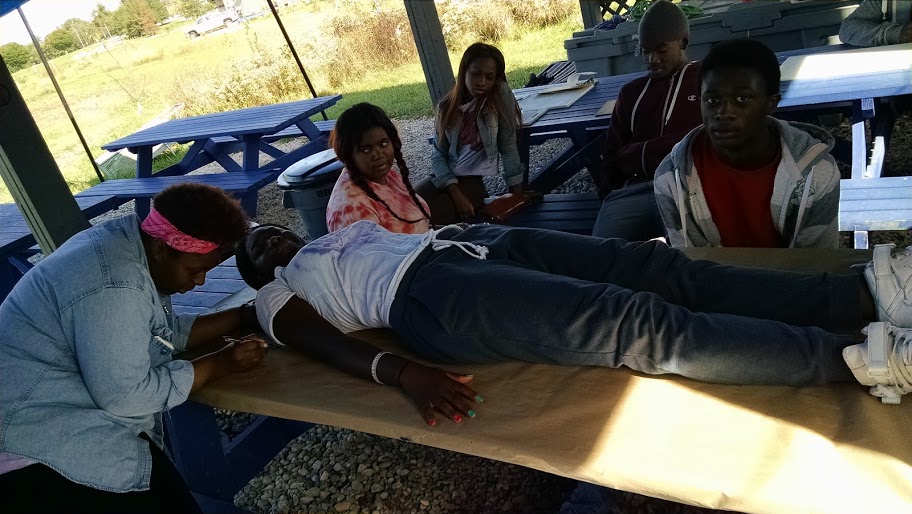
After tracing out the body, Youth Crew members then drew in some basic organs – heart, brain, eyes, teeth, bones, intestines, and lymph nodes. Then they were given cut-outs of various different fruits and vegetables and discussed as a team the ways in which different color foods impact the body. For instance, red and purple foods like strawberries and blueberries are high in antioxidants which helps repair cell damage and lowers the risk of certain diseases. Whereas, orange and yellow foods like lemons, oranges, turmeric and carrots are anti-inflammatory, which means they help reduce inflammation in the body and are generally good for the immune system. Moreover, these different color foods influence different parts of the body: greens are good for the digestive system, reds are good for the heart. Having discussed this as a group, students attached their fruit and vegetable cut-outs to the area of the body that color supports.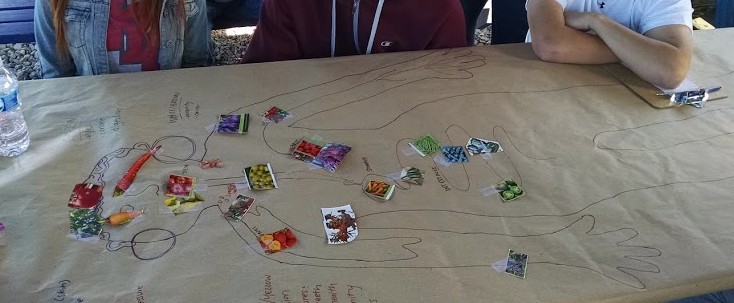
After completing the “Eat The Rainbow” lesson, students moved on to a lesson in cooking where they were given a brief training in proper kitchen and tool safety. Waqia demonstrated the ways to properly handle and announce yourself in a kitchen when you’re carrying around a sharp or hot object, while Molly demonstrated proper knife cutting techniques (i.e using a “bear claw” to protect your fingertips while slicing, dicing, chopping).
Next, Youth Crew members got to work chopping onions, dicing peppers, slicing yellow squash and mincing garlic for our quesadilla lunch!
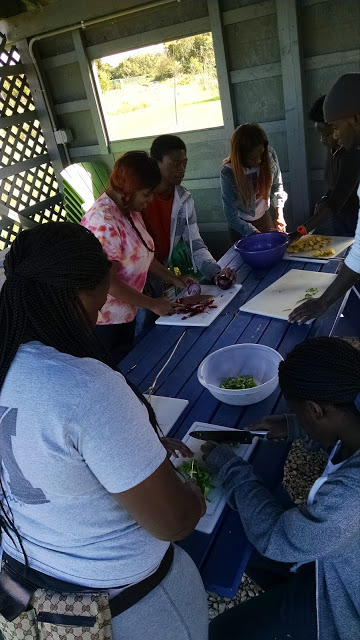
Students then spent some time sauteing the various different vegetables they chopped, as well as trying out different types of tortilla bread. We sampled corn, whole wheat, and traditional flour tortillas and voted on which we liked the best. 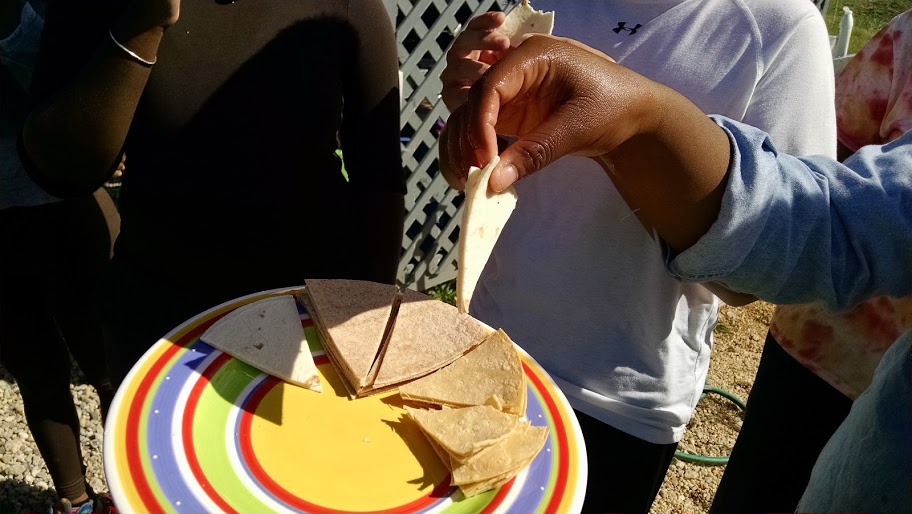
Next was assembly time – putting together the tortillas, beans, cheese, and vegetables and cooking them on our grill!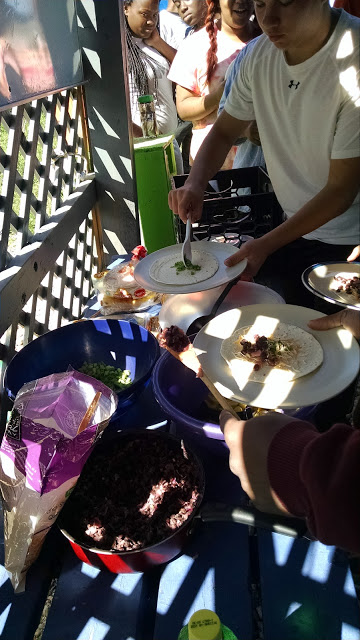
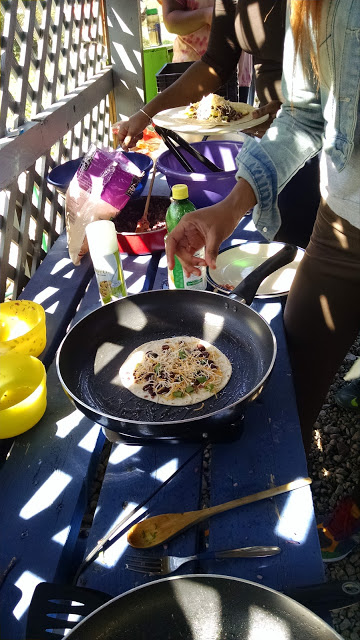
After eating all the delicious quesadillas they made and washing up the dishes, Waqia led Youth Crew members on a full tour of the Clifton farm, learning about our hoophouses, compost, rain garden/bioswales, and bee hives. We’ll have many more chances to explore all these spaces over the coming weeks!
About Real Food Farm
Real Food Farm works toward a just and sustainable food system by improving neighborhood access to healthy food, providing experience-based education, and developing an economically viable, environmentally responsible local agriculture sector.

